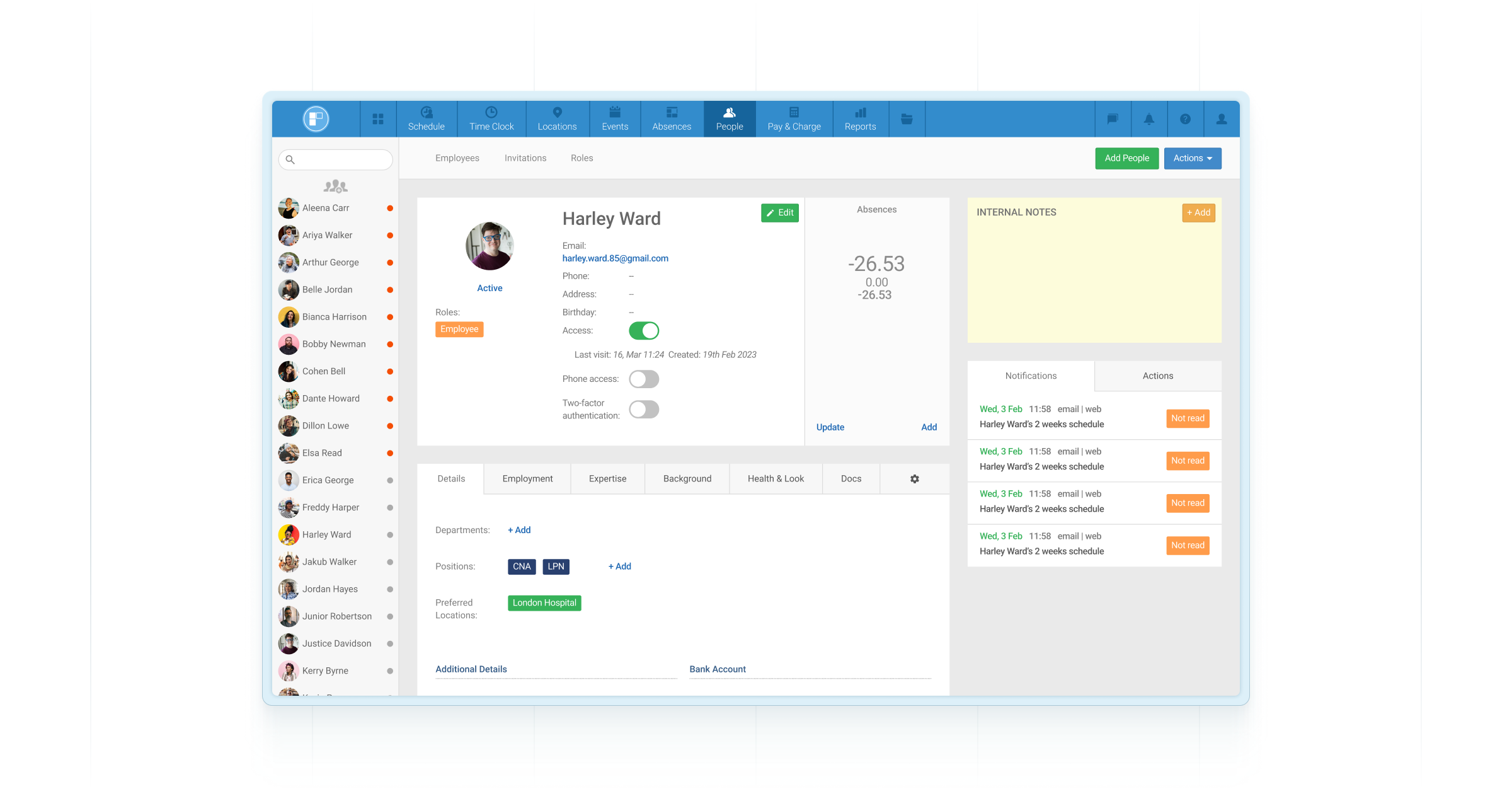Releasing the Power of Information: Enhancing Human Resources Approaches With Cutting-Edge Staffing Monitoring Software Program
By utilizing the power of information analytics, organizations can not only boost their recruitment approaches however also optimize staff member retention and productivity. The harmony between data-driven understandings and advanced technology provides a compelling possibility for HR specialists to reinvent their method in the direction of skill administration.
Relevance of Data-Driven HR Strategies
Data-driven Human resources approaches enable business to enhance their labor force management, recruitment processes, and worker involvement campaigns. By analyzing data associated to staff member efficiency, turnover prices, and ability voids, Human resources divisions can identify trends, predict future requirements, and develop proactive services to deal with difficulties.
Data-driven human resources methods additionally play a vital function in improving worker contentment and retention. Via the evaluation of employee feedback, performance testimonials, and training results, HR experts can tailor private development plans, recognize high-potential workers, and cultivate a society of continual understanding and development within the company. Moreover, data-driven insights enable HR teams to align their approaches with the total service goals, guaranteeing that talent management initiatives straight contribute to organizational success.
Benefits of Staffing Administration Software
Utilizing staffing monitoring software application streamlines the employment and onboarding processes for human resources divisions, enhancing performance and accuracy in ability purchase. One substantial advantage of this software is the capacity to streamline prospect data, making it conveniently available for employment groups. By having all applicant information in one area, HR specialists can successfully track prospect progress, connect effectively with potential hires, and ensure a smooth employment experience.
Moreover, staffing administration software typically consists of functions such as return to analyzing and search phrase matching, which help in swiftly recognizing top prospects that match the work needs. This automation reduces the moment invested in hand-operated resume screening, permitting HR personnel to concentrate on more calculated jobs. staffing management software. In addition, these systems can integrate with task boards and social media sites systems, expanding the reach of job posts and bring in a diverse pool of candidates
Additionally, analytics and reporting devices within staffing management software application give valuable insights right into employment metrics, such as time-to-fill and cost-per-hire. This data-driven strategy allows human resources groups to make informed choices, maximize employment methods, and improve general employing processes. By leveraging these advantages, organizations can improve their talent purchase initiatives, improve candidate experience, and eventually develop a strong workforce.
Enhancing Recruitment Processes With Data
Employing data-driven strategies in employment procedures has actually ended up being significantly crucial for companies seeking to enhance their talent procurement end results. By leveraging information, business can make more informed choices throughout the employment lifecycle, eventually bring about far better hires and enhanced retention rates. One key means information improves recruitment procedures is by optimizing task postings based upon understandings from previous successful hires. Evaluating metrics such as the source of leading skill, time to fill placements, and candidate top quality can assist recruiters customize task descriptions to bring in the ideal prospects efficiently.
In addition, data analytics can improve the testing and option process by recognizing patterns in candidate certifications and efficiency indications. Overall, integrating data into recruitment procedures encourages companies to make smarter hiring decisions and build high-performing teams.
Improving Staff Member Retention Via Technology

One means innovation can improve staff member retention is via using staff member engagement platforms. These platforms permit real-time responses, acknowledgment, and interaction in between staff members and administration, cultivating a society of appreciation and support. In addition, innovation can allow tailored understanding and development programs tailored to individual staff member demands and job aspirations, increasing job complete satisfaction and loyalty.
Furthermore, information analytics tools can assist companies recognize patterns and patterns connected to worker turn over, allowing them to take positive measures to resolve possible concerns prior to they escalate. On the whole, by leveraging innovation properly, companies can develop an extra supportive Click Here and interesting work setting that urges employees to expand and stay within the business.
Maximizing Workforce Performance With Information

Through the evaluation of information, HR departments can identify patterns and patterns that influence performance levels. By tracking worker work hours and job completion prices, companies can maximize work timetables to make certain that tasks are successfully dispersed among team participants. Furthermore, information can expose ability spaces within the workforce, enabling HR to implement targeted training programs that improve employee abilities and overall productivity.
Moreover, data-driven performance assessments make it possible for managers to provide details comments and support to staff members, promoting a culture of continuous improvement. In general, leveraging data to maximize labor force efficiency is a strategic approach that encourages companies to achieve their objectives properly my response and efficiently.
Conclusion
Finally, utilizing innovative staffing monitoring software can substantially improve HR approaches by leveraging the power of information. By incorporating data-driven recruitment processes, boosting worker retention through technology, and taking full advantage of labor force efficiency, companies can enhance their operations, make more informed decisions, and inevitably attain higher success in handling their human resources. Accepting these technical developments is crucial in the ever-evolving landscape of human resource monitoring.
Data-driven Human resources techniques make it possible for companies to optimize their workforce monitoring, recruitment processes, and employee involvement efforts. By assessing data associated to worker performance, turnover prices, and skill voids, HR divisions can determine trends, forecast future needs, and establish aggressive remedies to address challenges.
